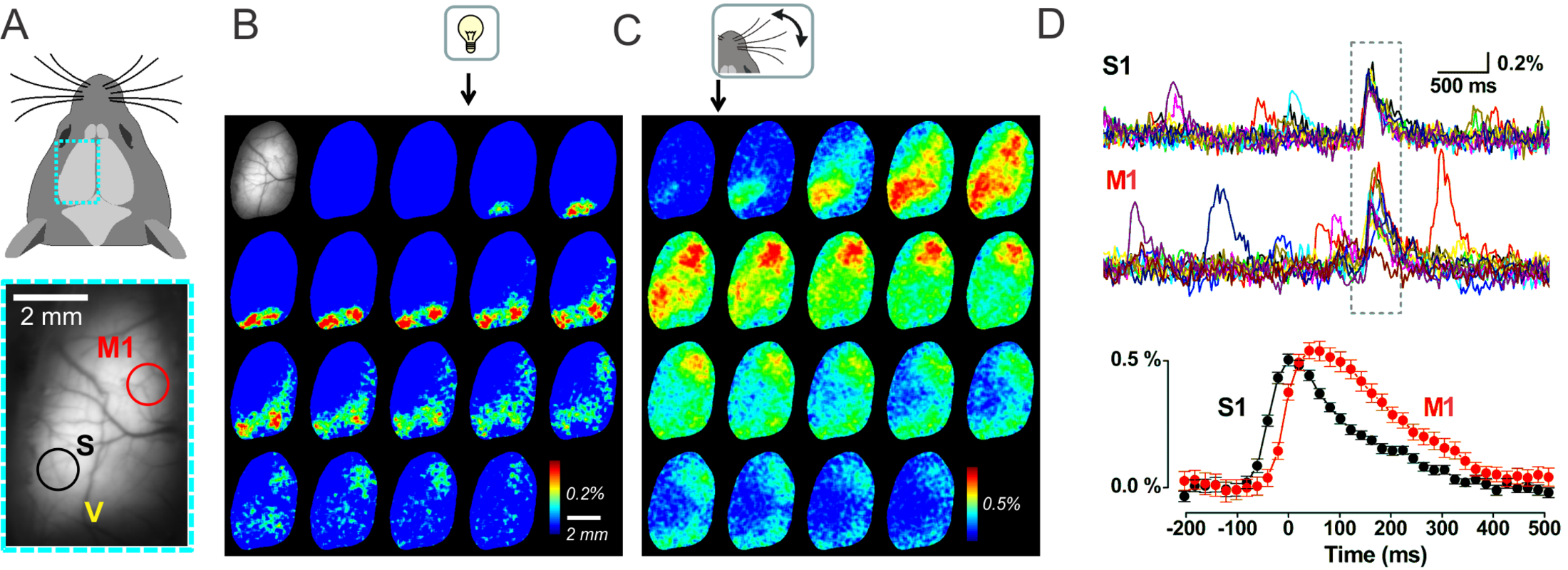Science
Genetically Encoded Voltage Indicators
The term “GEVI” (Genetically Encoded Voltage Indicator) was introduced around 2010 and we now use this term instead of our the earlier acronym VSFP (Voltage Sensitive Fluorescent Protein). GEVIs are proteins that incorporate into the lipid membrane (typically the plasma membrane) of cells to sense the electrical potential across the membrane (membrane potential) and report these electrical activities in the form of light (typically by a modulation of fluorescence emission). The genetic encoding of these indicators allows for targeting defined cell populations. Our lab pioneered in the conception and development of GEVIs to a stage that they are a powerful tool to investigate how brain functions emerge from neuronal circuit dynamics.
Our current focus to further develop GEVI-related tools are GEVIs that operate in the near-infrared optical spectrum and GEVI transgenic mice that facilitate the use of GEVIs.
Genetically Encoded Calcium Indicators (GECIs)
Our lab pioneered in the use of Genetically Encoded Calcium Indicators (GEVIs) for in vivo recordings to address a neurophysiological question.
Cortical Circuit Dynamics
We use GEVIs to image electrical activity of specific neuronal populations across the entire dorsal cortex of awake (resting or task-performing) mice. We are interested to understand how (or to which extent) perception, emotions and cognition emerges from cortical circuit dynamics.
Our first cortex wide voltage imaging highlighted that sensory-evoked cortical activity is accompanied by rich and prominent ongoing activity. It is clear that this intrinsic activity carries biological information. Much less clear is how this information inside the brain determines the brain’s interaction with the world outside of the brain.


We analysed the structure of these ongoing activities while mice are at rest. Current efforts focus on the question of how ongoing activity relates to spontaneous, perception-related and task-related behaviour.
Mind set and epigenetic setting of cortical neurons
A remarkable feature of the evolved brain is the variability of mind-sets (personalities) across individuals. Individual differences in personalities are commonly ascribed as a result of both nature and nurture. In biological terms, the factor nature can be described as genetic traits while the factor nurture is associated with individual life experiences. Our bold hypothesis is that personality settings are stored in the epigenetic profile of an individual, in the form of DNA modifications via nucleotide methylation. To test this hypothesis, we relate epigenome signatures to individual behavioural traits with a focus on variable social behaviour.